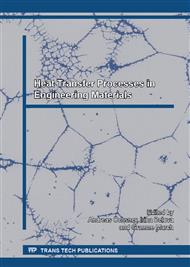p.1
p.11
p.19
p.29
p.39
p.47
p.57
p.65
p.73
Cross-Injection Film Cooling on a Curved Surface with or without a Vortical Flow in the Mainstream
Abstract:
Liquid crystal thermography with steady-state experimental method is used to investigate the effectiveness of two-row, cross-injection film cooling on a concave or convex surface. One leg of vortices of a delta wing is used to realize the interaction mechanism between the vortex generated by the cross-injection coolant and the secondary vortex of the main flow. The secondary flow generated by the delta-wing vortex generator produces upwash or downwash motion when sweeping over the film injection holes. In the experiments, the cooling hole diameter, hole-to-hole distances, and an included angle of 120 degrees are fixed, while the main flow Reynolds number, sense of mainstream vortex, and the coolant-to-main flow blowing ratio are varied. Because the cross-injection coolant generates a counter-clockwise vortex (viewed from upstream), results show that when the mainstream vortex has a sense of rotation opposite to that of the cross-injection vortex (i.e. an upwash mainstream vortex), the effectiveness is increased. On the other hand, same sense of rotation in both vortices (i.e. a downwash mainstream vortex) decreases the effectiveness. Both the convex and concave curvatures hamper the attachment of cross-injection coolant to the surface, resulting in a reduction in film cooling effectiveness. The effect is more influential for the concave surface.
Info:
Periodical:
Pages:
39-45
Citation:
Online since:
March 2013
Authors:
Price:
Сopyright:
© 2013 Trans Tech Publications Ltd. All Rights Reserved
Share:
Citation:


